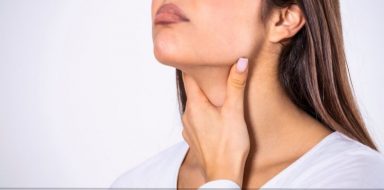Psoriasis is a common and chronic skin condition that causes raised patches of skin called plaques. These plaques can be itchy or painful and may cause emotional distress if they are highly visible. It can occur at any age, including during childhood. The most common age for psoriasis in kids is 6–10 years old.
This article will explore the signs and symptoms of psoriasis in kids, the most effective treatments, and how parents can help children with psoriasis.
Signs of Psoriasis in Kids
There are several types of psoriasis, all with slightly different signs and symptoms. The most common forms of psoriasis in kids include:
- Plaque psoriasis: This type of psoriasis causes patches of thickened skin called plaques to form, especially on the knees, elbows, scalp, and lower back. These plaques may be red and covered with silvery scales. They might be itchy and could crack and bleed, causing pain.
- Guttate psoriasis: This type of psoriasis causes smaller thickened skin patches that form in a “droplet” pattern. It most commonly affects the torso, arms, and legs but might also affect the face, scalp, and ears. Guttate psoriasis can appear after an infection, especially strep throat. It may disappear after the infection, or it may remain or develop into plaque psoriasis.
- Inverse psoriasis: This type of psoriasis causes smooth, red, and raw-looking skin and affects areas such as the armpits, groin, and genitals. It may occur in the diaper area in babies and is sometimes known as diaper or napkin psoriasis.
- Psoriatic arthritis: Psoriatic arthritis is a condition where joint pain, swelling, and stiffness occur alongside psoriasis. People with this condition may also experience eye inflammation, dryness, and discomfort.
In some cases, psoriasis can also affect the nails, causing pitting, ridging, and discoloration.
Early Signs
The early signs of psoriasis could easily be mistaken for other skin conditions, such as eczema. Therefore, any rashes or unusual skin changes should be investigated by a doctor as soon as possible.
Sometimes, psoriasis can occur following an infection or skin injury like sunburn. Parents should monitor their kids’ skin closely in these circumstances so that any issues can be treated promptly.
This article will look at throat inflammation, exploring the underlying health issues like nasal polyps, asthma and EoE. Learn more here.
Treatment for Psoriasis in Kids
There are many different treatment options for kids with psoriasis. The first-line treatment is usually topical creams and ointments that are applied directly to the skin. If these are ineffective, systemic treatments taken by mouth may help. These treatments usually work by suppressing the immune system, which plays a crucial role in developing psoriasis.
- Emollients: Emollients are creams and ointments that moisturize the skin. They are one of the most important treatments for anybody with psoriasis and should be applied regularly throughout the day to prevent dry, cracked skin, scaling, and bleeding.
- Corticosteroids: Corticosteroids are anti-inflammatory drugs that can be applied to the skin or taken by mouth. Oral corticosteroids can cause serious side effects, so most people use creams or ointments instead. They help to reduce symptoms such as redness, irritation, and scaling.
- Vitamin D analogs: Vitamin D analogs are another type of medicine that is applied to the skin. They are helpful for people who cannot use corticosteroids due to side effects. They can also be used in combination with corticosteroids.
- Salicylic acid/coal tar: Salicylic acid and coal tar are frequently added to shampoos for children with scalp psoriasis. They help to prevent symptoms like flaky skin and dandruff.
- Phototherapy: Phototherapy involves using ultraviolet light to reduce psoriasis symptoms. It is effective but can cause side effects, such as redness, burning, and hyperpigmentation. It may also increase the risk of skin cancer and is not recommended for younger children.
- Systemic treatments: These treatments are taken by mouth and aim to reduce activity in the immune system to ease inflammation. They include disease-modifying antirheumatic drugs (DMARDs) like methotrexate, and biologic therapies, like etanercept. They are useful for severe cases that do not respond well to other treatments.
How Can Parents Help Their Children?
Kids with psoriasis will need help from their parents to incorporate their treatment effectively into their routines. They may also require psychological support as they might feel self-conscious about their condition, leading to depression and anxiety. Some of the best ways parents can help their children include:
- Attending all medical appointments and reporting any changes in symptoms as soon as they occur.
- Working treatment into your kid’s everyday routine and making it as fun as possible.
- Monitoring how well treatment is working and reporting back to your physician.
- If your child is finding their treatment uncomfortable, discuss alternatives with your physician.
- Identifying and avoiding triggers for flare-ups. These could include infections, stress, medication, or cold weather.
- Ensuring your child has comfortable shoes and clothing. Loose clothing made from natural fibers is best. Gloves are important in winter as cold can be a major psoriasis trigger.
- Promoting sun safety. Sunlight and warmth can help ease psoriasis, but it is essential to avoid overexposure and sunburn to prevent skin cancer later in life.
- Educating and reassuring your child about their condition. Let them know it is very common, not contagious, and not a sign of being dirty.
- Cooperating with your child’s school and teachers. Ask them to be vigilant against bullying and let them know that your child might not always be able to participate in sports.
- Teaching older kids how to use camouflage cream if their psoriasis is in a visible area and they feel self-conscious.
- Keeping up-to-date with the latest research on psoriasis in children so you will be aware if any new treatments emerge.







